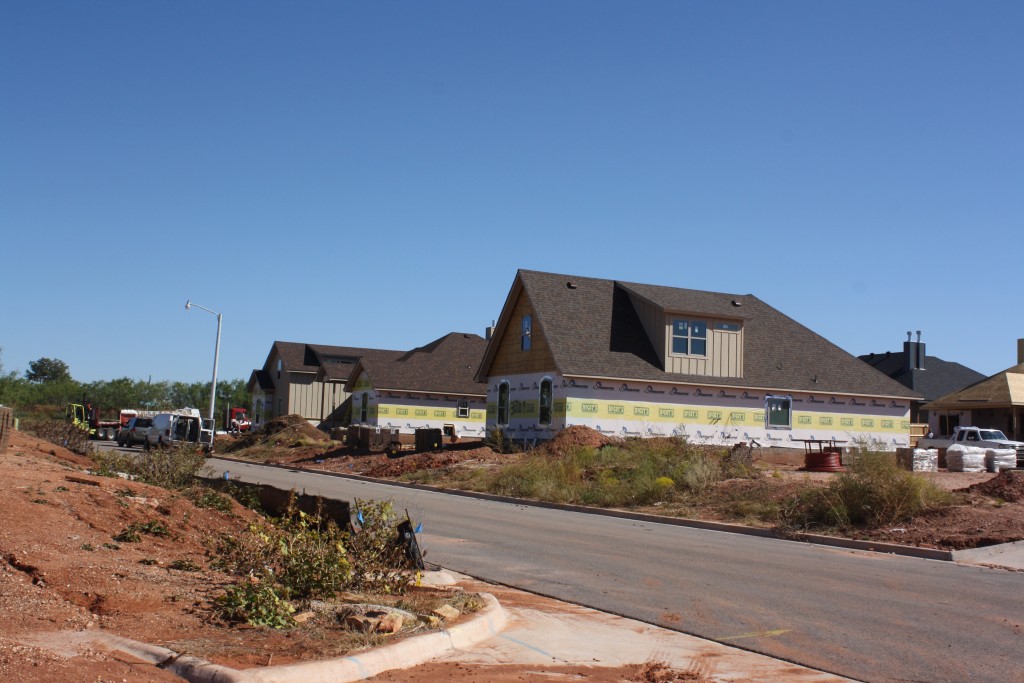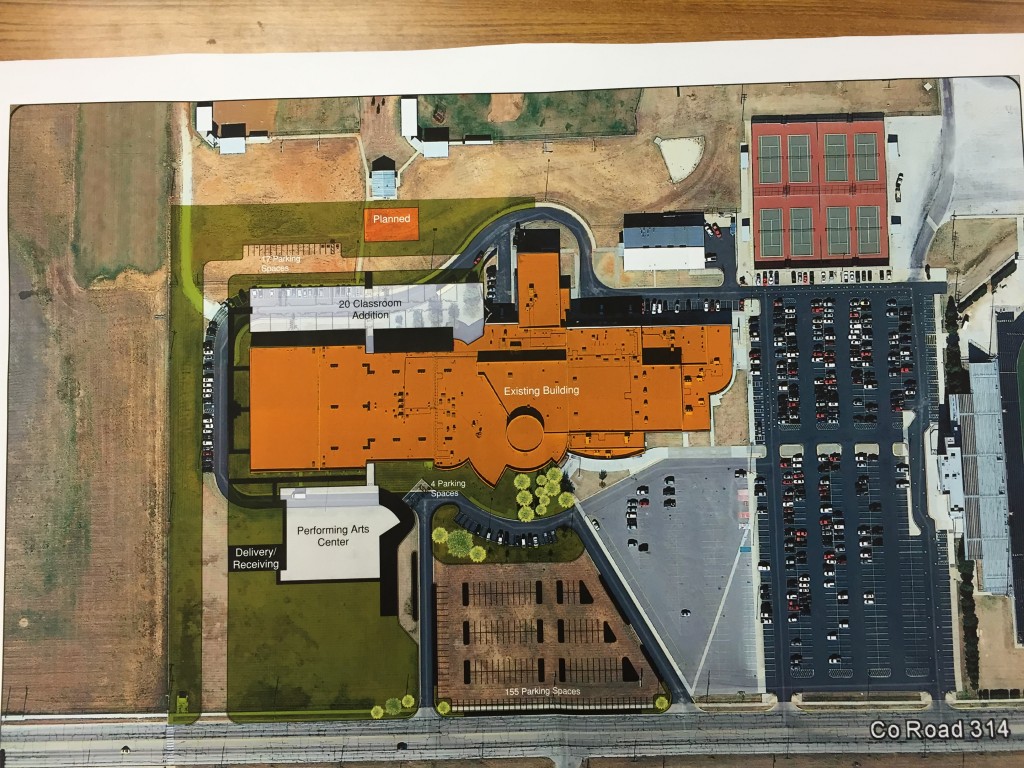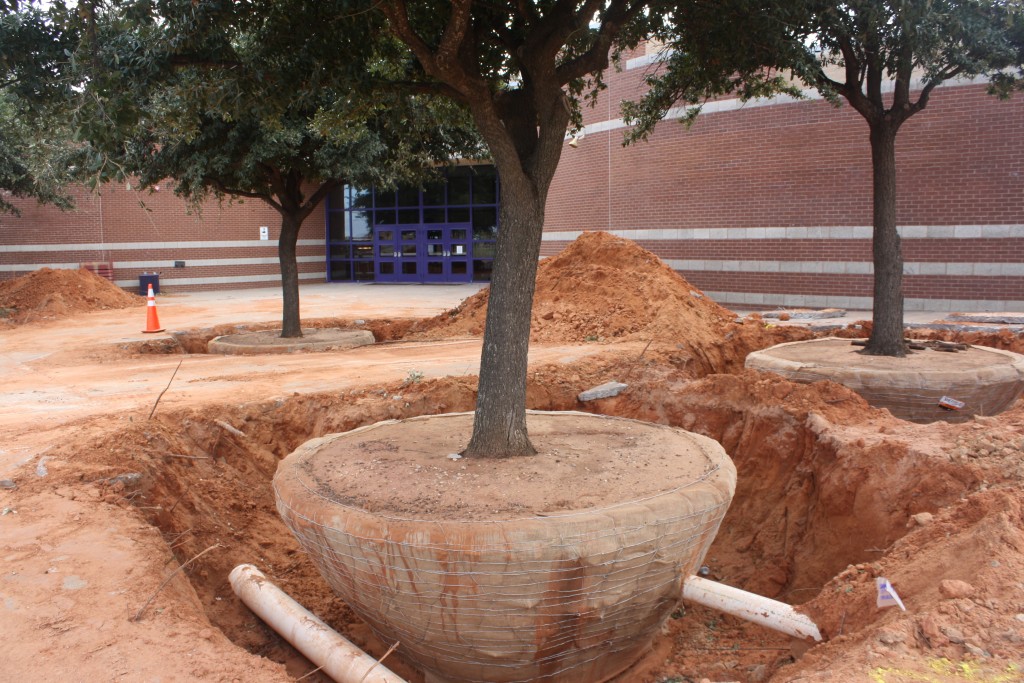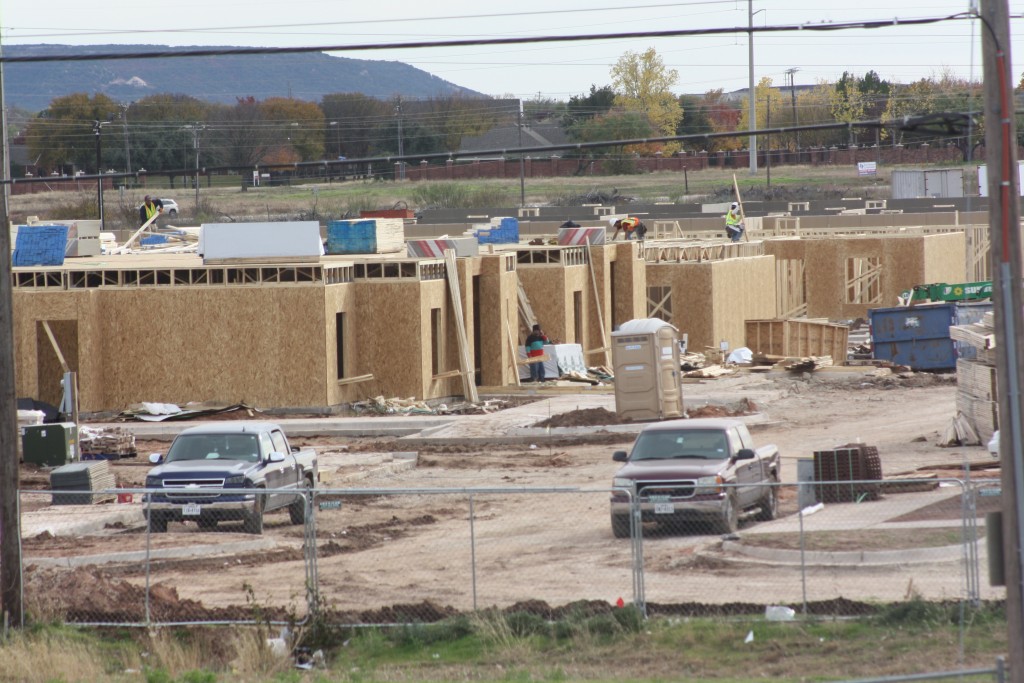Wylie old-timers still remember a time when the area south of the Abilene city limits was rural.
Just 30 years ago, Fairway Oaks was just developing, and 20 years ago, the Potosi area only had two subdivisions.
Well those days are gone.
South Abilene keeps growing, subdivisions keep popping up right and left, and what once was rural is now the suburbs.
“Three generations ago, people were moving from the farm to the city because that’s where the jobs were,” said Taylor County Commissioner Chuck Statler, whose precinct includes the Potosi area. “Now the American dream is to own a home and some land.”
When Statler took over as Precinct 4 commissioner in 1999, the Potosi area was rural, dominated by farmers and ranchers. The area had two new subdivisions.
Today, at least another 10 subdivisions have been added along FM 1750. The area just got its first stop light in December, and yet another large subdivision was break ground between Old Coleman Highway and Clark Road.
Statler said the latest subdivision is expected to be pretty big.
“Phase 1 looks to be big, and Phase 2 looks even bigger,” he said.
Potosi is not alone. All over the Wylie area, subdivisions and houses are going up, and in 2016, the area’s first apartment complex will open for business across from Wylie High School.
“It is growing, and I don’t see it slowing down anytime soon,” said Taylor County Commissioner Stan Egger, whose precinct includes Belle Plains Road, Iberis Road and Buffalo Gap Road. “Every builder I know is busy right now. It has gone from very sparsely populated to very densely populated.”
Growth in the Wylie area is nothing new. Wylie was once the little country school district outside of Abilene. But over the last 30-40 years, that has changed. Wylie is now a booming community.
“Abilene has been growing southerly since the 70s,” said Wylie Superintendent Joey Light. “There’s not really anything to slow the growth in this direction for people who want a little acreage. There’s a lot of space out here.”
Wylie graduate Shay Senter of Senter Realtors agreed that space is what is drawing people to south Abilene.
“The biggest factor is this is where most of the space is,” he said. “Most of the growth has been on the south side, and that’s where the land is.”
Statler said most of the homes in the Potosi area are higher end homes on an acre or five acres of land. People want acreage. They also are moving outside the city limits to avoid city taxes, he said.
“People are wanting to try to get out there for the freedom,” he said. “I think people are going to try to enjoy the acreage that’s there.”
He said he doesn’t see that changing because the city just does not have large chunks of land left within the city limits.
“Until the city of Abilene adjusts its infrastructure and looks at what they can do to attract people to move back to the city, I think people will continue to move outside the city limits just to avoid city taxes,” he said.
The Wylie area still has plenty of land available for future subdivisions, but Senter said the growth will likely at least slow down in the future.
“I don’t think it is going to continue at the pace that we’ve seen for the last two years or so,” he said. “I don’t see the demand for it. I definitely think we will see things level off at some point.”
Interestingly enough, while the area has exploded with houses and subdivisions, businesses, especially restaurants, have been much slower to come into the Wylie area.
“It’s definitely primarily residential growth,” Senter said. “The more limiting factor is that Abilene is still a relatively small town. You can get anywhere you want to go in 15 minutes. With everything being close by, it makes it difficult. I expect to see more commercial development in the next several years.”
The kind of growth Wylie has been experiencing affects the community in a number of ways. The most evident is the effect on the Wylie schools, but transportation, the volunteer fire departments, law enforcement and utilities are all affected by the growth.
“The commissioner before me, Neil Fry, told me one of the biggest challenges would be the urbanization of the rural area,” Statler said. “He said people would expect city-type services.”
Fry, as it turns out, was right. In this issue of the Wylie Growl, we look at how the Wylie growth is affecting the Wylie school district. In next month’s issue, we will look at how it affects transportation, the volunteer fire departments, law enforcement and more.
Wylie’s growth is both a good and bad problem to have.
“It’s a problem,” Egger said. “I don’t know that it’s a bad problem. We don’t have anything but nice developments.”
Rising enrollment is nothing new for the Wylie School District.
The district has grown remarkably over the last 30-40 years and has had to build new campuses or new classrooms in each of the last five decades just to keep up. Administrators have been told repeatedly that the enrollment increases would level off, but so far that has not happened.
In fact, far from it.
Over the last 10 years, the Wylie district has increased from 2,919 students to 4,031 – an increase of 1,112 students. In just the last five years, the district has grown by about 20 percent.
And with the vast amount of growth in the Potosi area and new apartments set to open in 2016, that doesn’t seem likely to change anytime soon. But just how bad will it be. That’s the magic question, and the district has hired a demographer to try and get an answer.
“One of the things he is doing is trying to get feedback on all the housing subdivisions that are going in,” Light said of the demographer.
Light said the subdivisions don’t always have as many children as one would think.
“We would see all that housing and think this is going to be terrible, and then there weren’t as many students as we thought,” he said. “Now apartments are a whole new ball game.”
Light said research shows that Wylie has about .3 students per house, which indicates that many of the new subdivisions are attracting owners without children.
“Those are high dollar houses,” he said. “A lot of those subdivisions are not starter houses.”
Light said he does not know how many students to expect from apartments.
A new apartment complex across from the high school is set to open in 2016 and will have 221 units. Another apartment complex is planned for the corner of Buffalo Gap Road and FM 707, and it is expected to have 432 units. Light said he has heard rumors of a third complex but nothing firm yet.
Exactly how much help a demographer will be in answering those questions remains to be seen.
The district contracted demographers in 2010 and 2012, and both times Light was told that enrollment would quit increasing. Twice they have been wrong.
“They both missed,” Light said. “They thought it was going to level off. They didn’t foresee the additional housing developments going in.”
The last two years, enrollment increases have stayed in the 2-3 percent range, and if that continues, the district is in good shape for four or five years, Light said.
The addition of the Early Childhood Center and the Middle School a few years back, left two grades at each of the younger campuses. Each of those can accommodate up to 800 students.
Classrooms currently are being added to the high school that will ease overcrowding there.
The district paid for the Middle School and ECC with money in a construction fund, and a bond election is paying for the high school classrooms. Most of the district’s other construction funds were needed for current projects.
Light said he hopes to begin putting aside money in a future construction fund starting this year, so that when enrollment increases do force the district to add new classrooms, money will be available.
“Our goal is to not have to take out another bond,” he said.
The school board has purchased 30 acres of land on Colony Hill Road east of Lake Kirby in case it needs to build a campus on that side of the district. If a future building is needed, it makes sense to build it in that area, Light said. Doing so, would ease the traffic congestion that currently exists around the campuses.
“Most of the new growth is on the east side of Highway 83/84, and there’s only one way to get here from there,” he said. “If we can keep a lot of that traffic on that side, it would be great. We are kind of excited about doing that.
“We think that’s probably four years down the road before we have to address that,” he said.
Construction is under way at the high school for new classrooms that will help ease crowding on that campus.
The classrooms are being funded by a bond election passed by the Wylie community in May and will cost about $5.3 million.
Wylie Superintendent Joey Light said he hopes the classrooms will be complete for the 2016-17 school year, but that might be wishful thinking.
“I’ve asked them to be complete by mid-August, so we can start school with them,” Light said. “It’s going to be tough. It just didn’t time out for us.”
He said recent rains haven’t helped slow down progress.
The bond election also is funding a $10 million Performing Arts Center at the high school; however, that project likely will not start until March, Light said. It will take about a year to complete.
The new classrooms will be located behind the high school, and the new auditorium will be located in front of the high school. Additional parking will be added in what was a grassy area immediately in front of the front door. The auditorium will be to the west of that.
The new auditorium will include a choir hall and several performance rooms, and the choir will use the new choir hall as its classroom once the building is complete. The band will get the added space that the choir vacates when it eventually moves to its new room.
In addition to the classrooms and auditorium, the district is making about $75,000 in improvements to the Ag Project Center and is doing about $200,000 worth of work on the baseball and softball facilities.
The school board also voted recently to fund $1.6 million in roof repairs at multiple campuses, and $80,000 to update the HVAC system in the Early Childhood Center’s gym. That gym is one of the oldest buildings owned by the school district. It was assembled in the 1940s from an old barrack from Camp Barkeley.


















